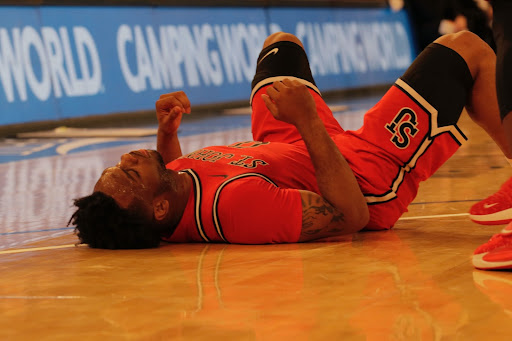For those who feel that art is impractical, lofty and an overall waste of time, the Whitney Museum’s Sculpture Court at Philip Morris is just for you.
Located in the heart of hustling, bustling Manhattan (42nd St. and Park Ave.), the current exhibition, “Outer City, Inner Space,” addresses issues involving the need for public urban space. The court houses three sculptural installations by artists, Terasita Fernandez, Stephen Hendee and Ester Partegas, along with an adjacent video installation by Haluk Akakce. To top it off, the whole thing is free of charge.
All of the installations were constructed particularly for the space they occupy. So when trying to understand the intentions of the artists, it’s important to have a sense of the architectural and functional qualities of the environment. Most noticeably, the 30-feet glass walls that enclose the exterior sides make the “outer city” evident to those within. Attention is drawn to the urban lifestyle, which makes these public places necessary. Whether it is eating, reading, working or waiting for a train, the Sculpture Court accommodates the “to go” tenet of urban society.
At first glance, one might mistake Ester Partegas’s “Moving about Matters” for a renovation project. Upon further investigation, the 8-feet. Chopsticks and pillow-size salt and pepper packets should tip you off that it is an enormous Chinese take-out bag.
Partegas is in one sense satirizing public monuments but, more importantly, highlighting the seemingly mundane activity that truly defines the space. Most architectural icons tell us something about why the structure exists. Like a crucifix in a church signifies the building’s function, “Moving about Matters” gets right to the core of why the sculpture court was built.
Emphasizing its ridiculous scale, Partegas envelopes one of the court’s fake trees inside the lunch sack, creating a small architectural space. From this vantagepoint, the installation resembles the facade of a New York souvenir shop, equipped with postcard racks on either side of the entrance.
While the postcards bear the typical New York City banner, the images are less predictable. Instead of dramatic Manhattan skylines, Partegas presents us with intimate, real scenes of people eating and living right on the street. Partegas asserts that this is the true face of New York and the reason for constructing such public urban spaces.
Terasita Fernandez’s “Sky(Plane)” and Stephen Hendee’s “War Gems” speak to the fusion of technology and our organic selves. In the city’s landscape, the sky is often the only indication of nature. Keeping with the environment, Fernandez offers a sky-like structure to soothe the cold corporate architecture. It is, therefore, an ironic process of reinstituting the natural into places where it has been built over.
Science fiction novels like William Gibson’s Neuromancer deal with these same themes and are an inspiration in Stephen Hendee’s work. “War Gems” is an example of a new trend in Hendee installations, which he terms as “interventions,” aiming to create a stark contrast to the environment so as to expose its true nature. The glowing mass of faceted neon shapes looks like it belongs on a starship and injects an exaggerated image of urban life in the future. We can, however, still detect a sense of the organic as the installation slithers down the stone stairs, but like “Sky (Plane)” it is only suggested.
The glowing mass of faceted neon shapes looks like it belongs on a starship and injects an exaggerated culmination of urban life. We can, however, still detect a sense of the organic as the installation slithers down the stone stairs, but like “Sky(Plane)” it is only suggested.
Haluk Akakce seems to view this synthesis of technology and nature positively. His triptych (three panel) video installation, Illusion of the First Time, is idyllic. Using imagery of computer-generated flora paired with delicate, euphoric audio, we could easily envision it as a welcome sanctuary for any overworked, stressed out businessperson.
The Sculpture Court at Philip Morris dissolves dualities such as inside/outside and real world/art world, proposing that in the urban environment these things are interdependent.
Information about “Outer City, Inner Space” can be found at www.whitney.org. The museum can be found at Phillip Morris Southwest, at the corner of 42nd St. and Park Ave. Take the E or V train to 53rd and Lexington; transfer to the downtown 6 train and get off at 42nd St.







